Comprised of 6,852 islands and home to the world’s largest metropolitan area, a trip to the Land of the Rising Sun is nothing short of mesmerising: neon-lit cities which function round-the-clock and ethereal landscapes combined to make Japan one of my favourite countries visited to date. With just shy of three weeks to see as much of Japan as we could feasibly manage, Laurence and I compiled a jam-packed itinerary and clocked up hundreds of thousands of steps executing it – enough to make couch potatoes baulk from their sofas!
Woken from our slumber at hideous o’clock, we made it to the airport in record time only for our flight to be delayed – so we browsed duty free and breakfasted on the unlimited free chocolate samples to kill the time. A viewing of The Jungle Book, many salted peanuts and a glimpse of Mt Fuji later we landed at Narita International Airport, some sixty kilometres away from central Tokyo. An hour-long ride on the Access Express took us to Keisei Ueno Station, a short walk away from Space Hostel Tokyo. Besides amassing a collection of maps and munching our way through a selection of goodies from a nearby bento shop, we also had our first run in with a Japanese electronic toilet. I’m sorry Japan, but I’m not quite on board with the wash and blow dry for derrières.
The following morning we set off bright and early in the direction of Tsukiji. En route to the famous fish market we detoured via Tsukiji Hongwan-ji, a rather ornate temple with an intricate domed roof. Tsukiji Fish Market doesn’t open to the public until 10am, so we spent some time strolling around the outdoor market (filled with street food, sushi and all sorts of curios) before opting for breakfast sushi. When in Japan . . .
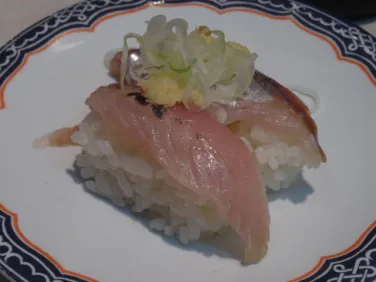
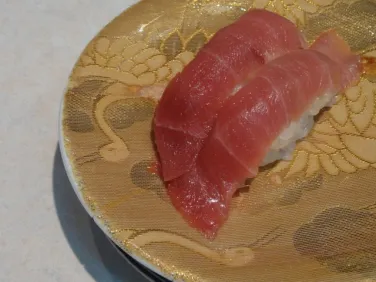
At 10am sharp, the western tourist migration into Tsukiji Fish Market began. With military precision, staff metered entry into the market – luckily we didn’t have to wait long to experience the world’s biggest wholesale fish and seafood market for ourselves! Words cannot describe this sprawling mass of seafood stands selling everything from squid, eels, oysters and sea urchins to octopus, all manner of shellfish and tunas the size of young children.
After exploring row upon row of fishy delights, we detoured via the outdoor market for Laurence to have a sashimi-fix before wandering through Ginza, an upmarket shopping district which – to Laurence’s delight – was laden with second-hand camera shops. Stumbling upon a Lindt shop, we ventured inside and came away with a pick ‘n’ mix of Lindors: mint, cappuccino, citrus, caramel and raspberry – all flavours which need to come to Britain soon.
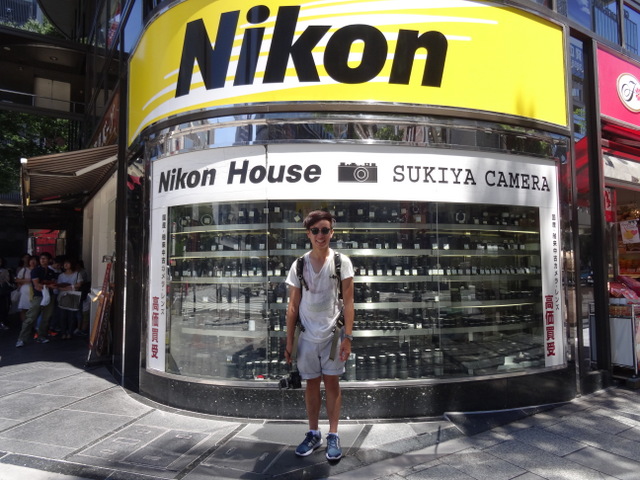
Leaving air-conditioned bliss behind, we set off for the Imperial Palace Gardens. Concrete skyscrapers gave way to a vast terrapin-filled moat encircling the Imperial Palace complex. The expansive grounds were abuzz with cicadas; the noise these little insects produced was insane! Crowds gathered around Nijubashi Bridge, an iconic Tokyoite landmark. It’s a picturesque spot, and as someone who doesn’t like having every man and his dog in their pictures the fact the bridge itself was closed to the public was perfect.
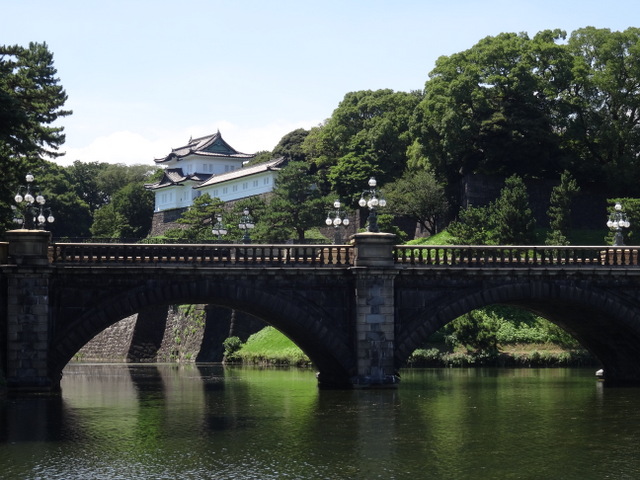
Melting in the baking heat, we moved on to the Imperial Palace Gardens proper; entry is free, and you’re given a ticket to return upon exiting the gardens. Besides the visitor hut selling those all-important ice creams, there are several guardhouses, a tea garden, a bamboo grove, remains of former defence towers (with decent vistas of the park and surrounding skyline) and a variety of water features. It’s a nice escape from the concrete jungle, but don’t expect gardens on par with British country estates.
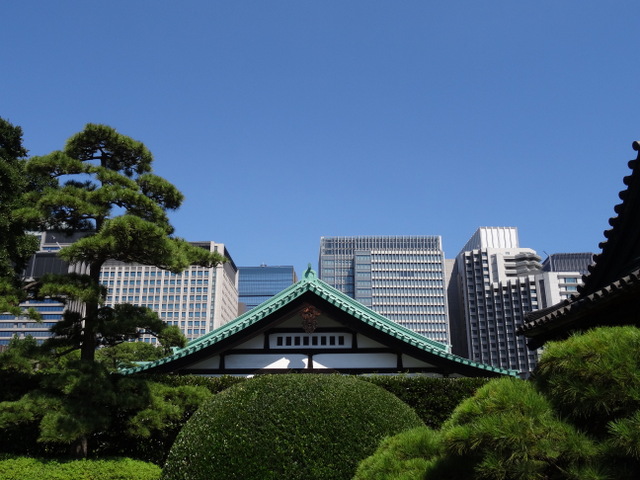
We then took the metro from Kudanshita to buzzing Shinjuku, for a free aerial view of the metropolis from the Tokyo Metropolitan Government Building. After passing security checks, we were whizzed up to the observation deck. From above, the size of this eye-wateringly huge metropolitan prefecture remains beyond comprehension. With stunning views of the city and offering free entry to boot, this was a good find in a notoriously expensive city!
Heading back towards central Shinjuku, we passed a cultural show and stopped for a while to watch the (admittedly rather bizarre) performance.
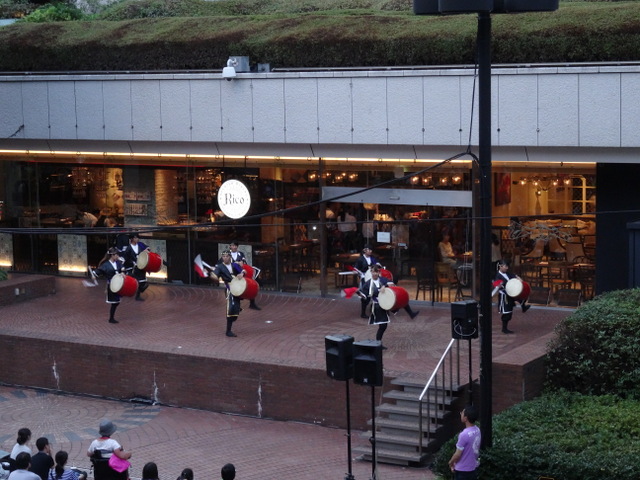
With the light fading, Shinjuku’s billboards lit up the sky: this vast neon neighbourhood is Asia’s answer to Times Square.
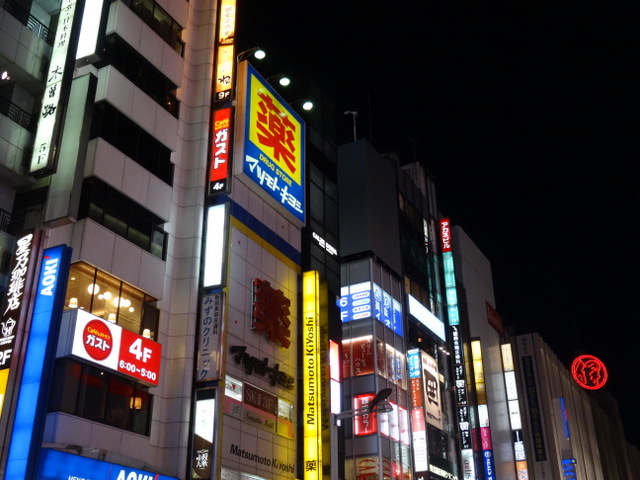
Our final stop of the day was the famous Shibuya Crossing, widely considered to be the world’s busiest intersection. When the lights turned green, tidal waves of people swept off the pavement and into the road; a good view could be obtained from Starbucks, but table-hoggers meant it was a longer wait for a decent view than we had anticipated.
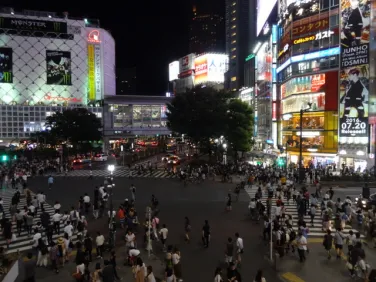
Tips:
- Whilst Haneda Airport (HND) is undeniably closer to central Tokyo, there’s no shortage of connections into the city centre from Narita International Airport (NRT).
- If you’re looking for a budget-friendly, clean hostel with good public transport links, Space Hostel Tokyo is a great option. Away from the tourist hubs of Shinjuku and Shibuya, it’s located in the cultural heart of Tokyo.
- Tokyo’s metro and subway system is rather complicated, as it is privatised and thus tickets are non-transferable between different lines. We simply bought the cheapest ticket, hopped on and used the fare adjustment machines before exiting the station – that way, we never overpaid for a journey.